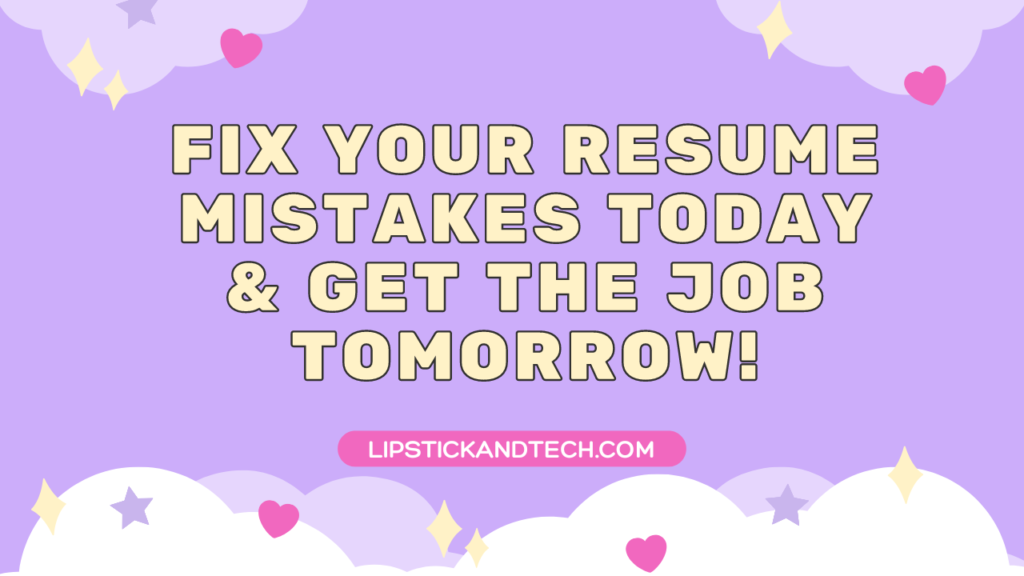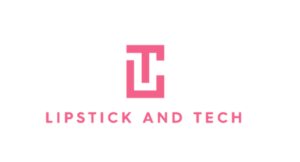Lipstick and Tech: Launch Your Dream Tech Career with Expert Coaching
Transform your future with expert tech career coaching, professional resume services, and industry-leading training. Start your dream tech career journey today.

If you were anything like me, job hunting was not always fun. But it’s a brand new year and a brand new you! It’s a lot of work, a lot of research and can be time consuming. The most important tool for recruiters to find the right candidate is your resume.
Like many students, I used school resources to have resumes looked at, and corrected over and over again until I was satisfied with the result. The following tips are meant to summarize the mistakes that myself and colleagues and what key research universally recommendations when seeking employment.
Mistake #1:
You’re not targeting for specific opportunities
Employers can easily read whether you tailored your resume to fit the job requirements or not. In fact, it should read as if the targeted job is a natural next step in the job seeker’s career progression.
Mistake #2:
Your resume is not concise enough
It’s often debated whether one or two pages is good enough for a resume, but all recruiters can spend as little as 15 seconds reviewing a resume, so it is important to be concise as possible. Be sure to have consistent formatting (i.e. matching bullet points for descriptions, bold job titles). An additional note is that you do not need to list all of your jobs– it is important to keep your resume at a reasonable length.
Mistake #3:
ATS/OCR Systems cannot read your resume
I’d like to start off by making a clear note that ATS will not make or break your resume, but it is valuable to know that since recruiters will optimize these systems to their liking, you’ll want to make it as easy for them as possible! Many large companies use a optical character reader (OCR) which looks for key skills and buzzwords to match your role’s requirements and your resume. A recruiter can tell if you’re excessively adding the buzzwords, so only use buzzwords where thy apply. The important part of OCR systems is that in order to ensure it is being read correctly, do not get too creative with your fonts and layout, as not all OCR systems are created alike. As always, proofread to ensure content is also spelled correctly and can be picked up. You should always write a resume for a human, but it’d be ignorant to completely ignore OCR systems.
Mistake #4
Not including basic information for HR and Tech department
This role is especially important to those applying for technical jobs. It’s important to remember that an HR team is not always knowledgeable about the wants and needs of a technical role, so it’s important to add components both would like to know. For example, what you did at your job, degree, coursework and programming languages. This can be done with a skills and accomplishment section in your resume.
Mistake #5
You included an “Objective” section
This role is especially important to those applying for technical jobs. You’ll find that most objectives are too vague for the employer and only focus on what you are seeking out of the job, and not what you can provide or your skillset. In my opinion, you are better off saving valuable resume real-estate and could include a professional summary explaining your experience and why you are qualified [at the top of the page].
Want something more personalized? I offer a variety of Resume & Career services, including: Resume or LinkedIn Audits, Resume Writing, and Resume, Cover Letter & LinkedIn Profile Writing.
Work with me
Get noticed by recruiters and land your next job, faster!
You’ll be in good hands with a Salesforce cloud computing professional who has navigated their career in the ecosystem as well as pivoted from various tech jobs! As someone who focuses on cloud computing clientele, I know what recruiters are looking for and get your resume in the best shape possible for your job search.
